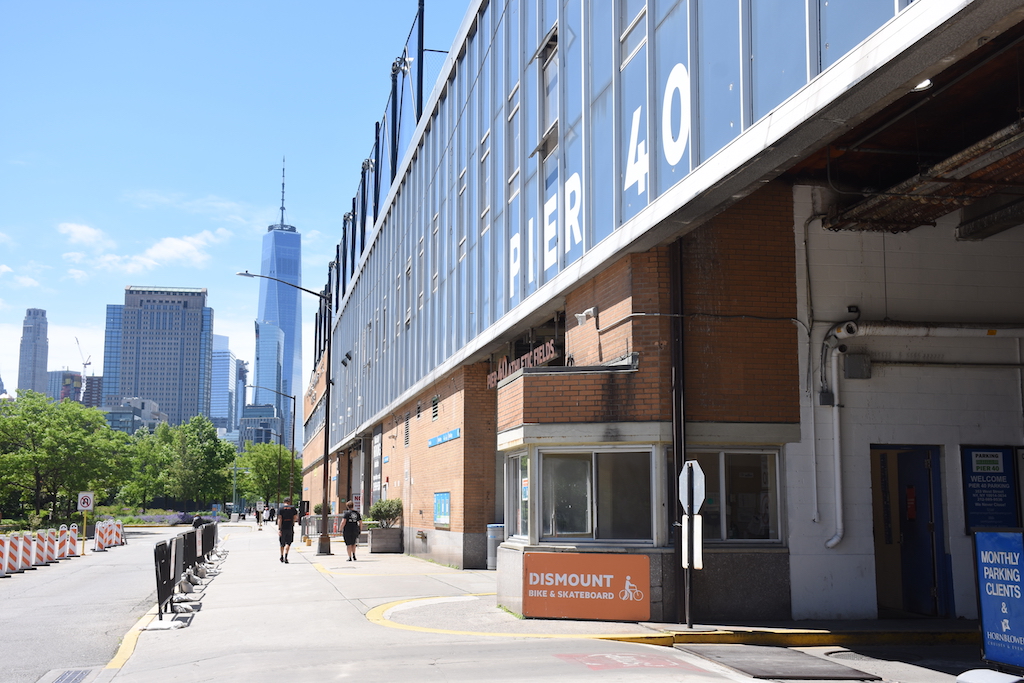BY LINCOLN ANDERSON | Local politicians will hold a public forum on Tues., May 28, on potential legislation to amend the Hudson River Park Act — possibly to allow commercial office use on Pier 40.
While an area equivalent to 50 percent of the pier’s footprint can be used for some commercial purposes — like parking — commercial office use, specifically, is currently not allowed on the roughly 14-acre W. Houston St. pier, per the park’s founding 1998 legislation.
By the same token, an area equal to at least 50 percent of the pier’s footprint must be devoted to passive or active recreational use.
The forum will be held on Tues., May 28, from 6 p.m. to 8 p.m., in the cafeteria of the new 75 Morton middle school, at Greenwich and Morton Sts.
The event will be hosted by Assemblymember Deborah Glick, state Senators Brad Hoylman and Brian Kavanagh, Congressmember Jerrold Nadler, City Council Speaker and Manhattan Borough President Gale Brewer.
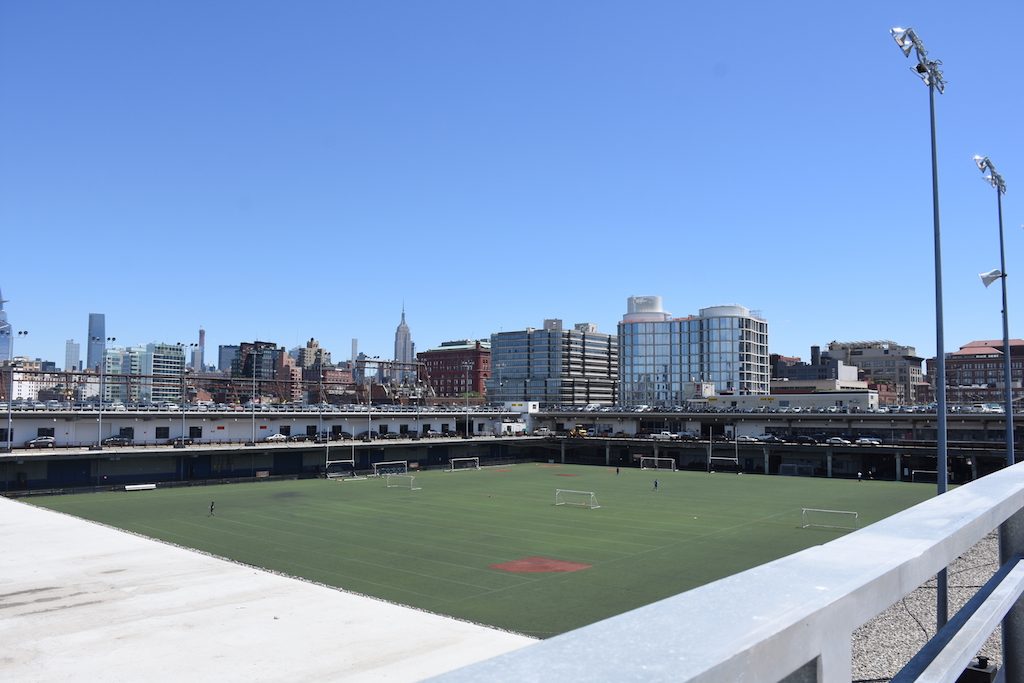
According to Hoylman, draft legislation, with the proposed amendment or amendments, will be circulated in advance of the meeting.
In a first-of-its-kind process, local elected officials and/or their staff have met regularly in recent months to hash out some basic guidelines — and a possible plan — for what they would like to see for the future of Pier 40. Much of this reportedly will focus on what should or should not be mandated or restricted for Pier 40, in terms of development parameters, in a possible legislative amendment.
The Hudson River Park Trust, the 5-mile-long park’s governing state-city authority, has made it clear that it feels commercial office use is its preferred way to redevelop the pier commercially. The Trust, according to waterfront park activists, reportedly envisions a “full teardown” approach toward the existing three-story pier-shed structure and constructing a new building, up to six or seven stories tall, on the pier’s northern edge.
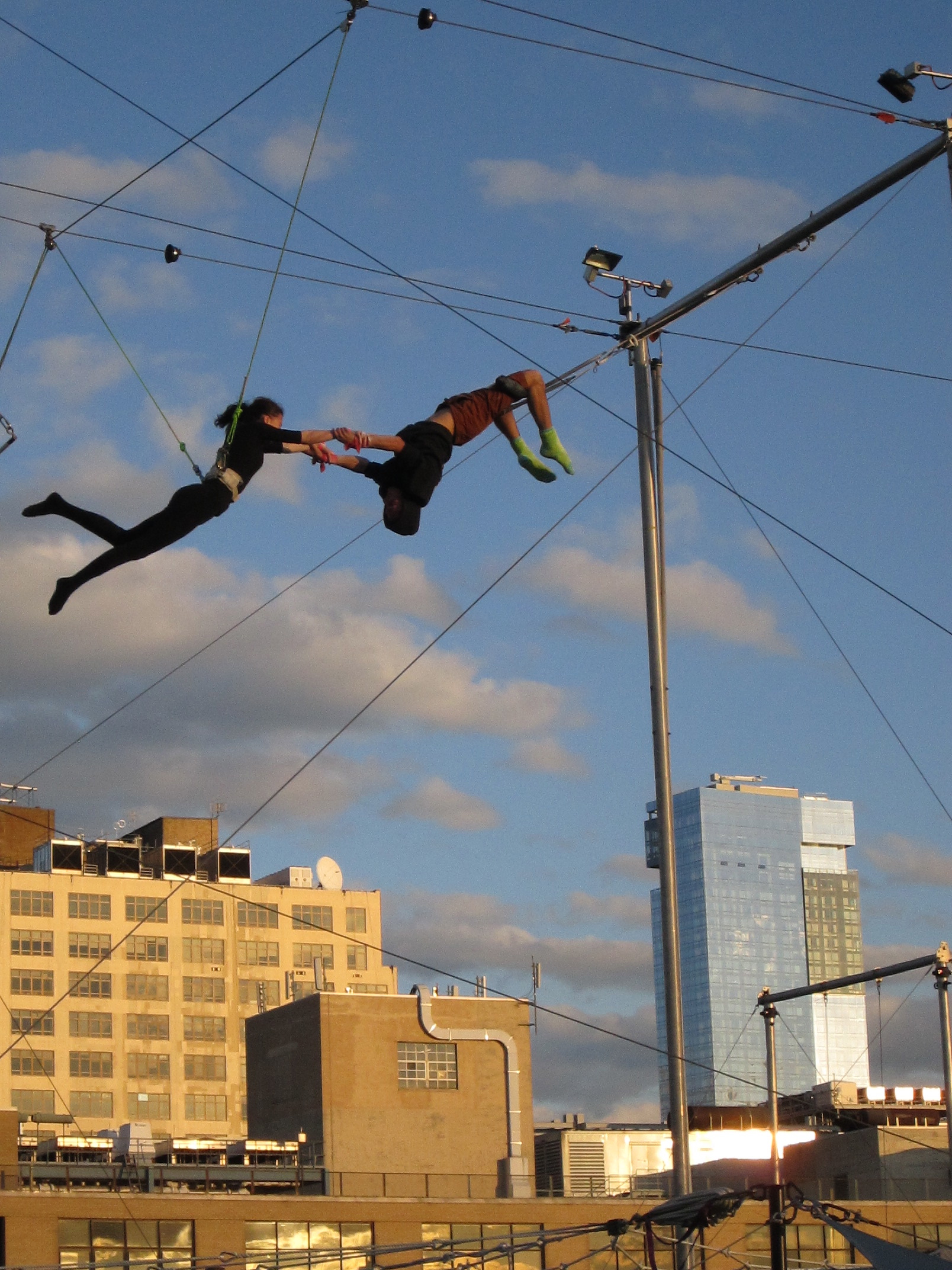
Community Board 2, however, is calling on the Trust not to use all the pier’s available development rights, but instead to “leave some on the table.” C.B. 2 also is not exactly championing commercial office use, saying it would like to see space devoted to arts groups, among others, on the pier. If, however, the pier must get commercial use, then C.B. 2 says there must be some “givebacks” to the community, in the form of space for arts and the like. There is also a strong sentiment for adaptive reuse of the pier — similar to what is currently being done with Pier 57, at W. 15th St.
The board outlined its views in a lengthy resolution last month, that was passed by the 50-member body with strong support — though not without some strong dissent, notably from Susanna Aaron, a board member of Hudson River Park Friends, the park’s main private fundraising group.
The Trust was outraged by C.B. 2’s position, and its board chairperson, Diana Taylor, recently fired off a letter to local politicians to complain about the board’s stance.
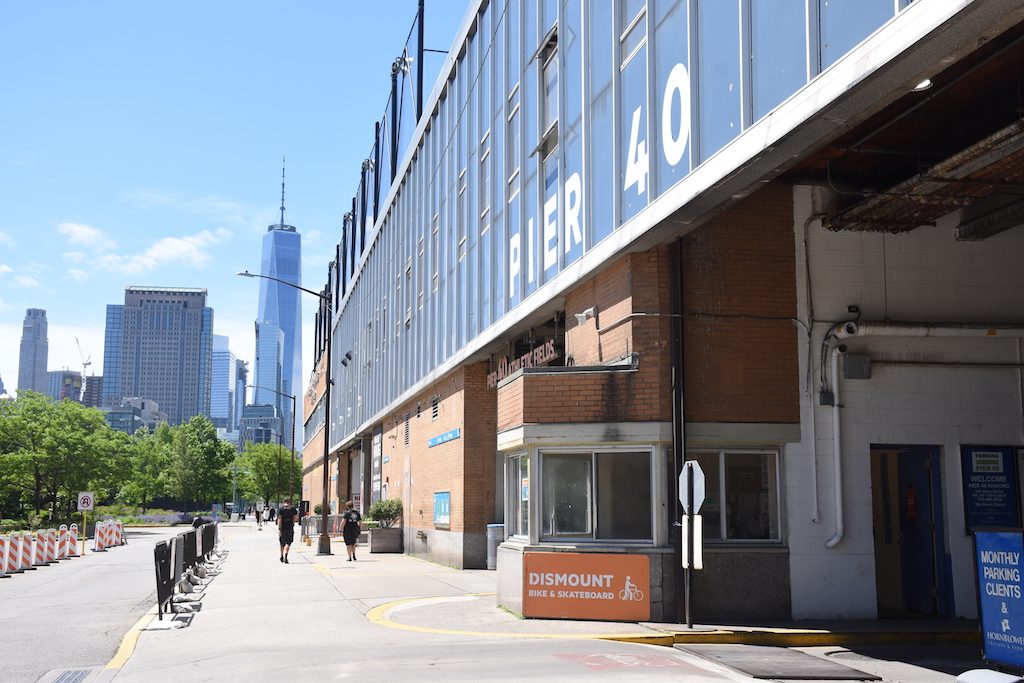
In response, Glick wrote back to Taylor, defending the local community board.
“There are many stakeholders who are deeply invested in their visions for the future of Hudson River Park and Pier 40,” Glick wrote, in part. “These range from parents whose children use the playing fields, or who don’t play organized sports but need more open space; to groups who have worked on environmental concerns in the Hudson for decades; to Friends of Hudson River Park, a subsidiary of the Hudson River Park Trust, who are working to encourage community advocacy. I believe it is essential to have a community-led process where the needs of these and other stakeholders can be heard and weighed in our deliberations as we move forward. I am proud to be working with my fellow elected officials and Community Board 2 to ensure this continues to be the case. …
“There continues to be a need to improve Pier 40’s facilities for active and passive recreation,” Glick wrote. “The community has already accepted significant development surrounding the park, and any path forward needs to ensure the best possible facility with the least negative impact to the park itself.”
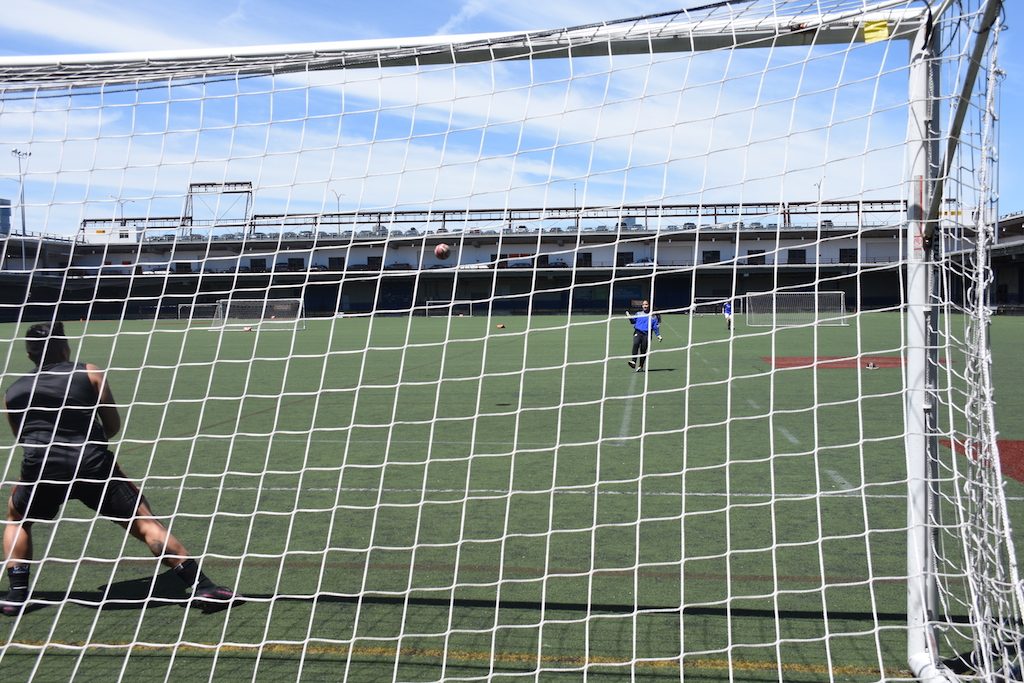
Pier 40 has already received $100 million for repair of its steel support piles, thanks to the “air-rights transfer” legislation that was passed back in 2013 that allowed the park to sell its unused development rights to projects on the other side of the highway — in this case to the former St. John’s Terminal site.
In a statement to this paper, a Trust spokesperson said, “Contrary to speculation in The Villager, the Trust is not pursuing a ‘teardown’ option, nor a seven-story building on the pier’s north side. There is no redevelopment plan right now. As we’ve noted to local stakeholders, we’d like both new development and adaptive reuse options on the table, with the goal of generating $12.5 million annually toward overall park operations. And at the same time, we’d like to make sure that there are options on the table that allow for a development that funds increased public open space including high-quality ball field space on the pier.”
Meanwhile, local youth sports leagues, like Downtown United Soccer Club and Greenwich Village Little League, say they just want “the process to move forward” — and that the details of any plan can be worked out after developers and possibly other parties respond to a future request for proposals, or R.F.P., to redevelop the pier. Keeping their field space on the pier, if not expanding it, is the leagues’ priority.
Previous R.F.P.’s for the pier have sunk due to community opposition over the plans’ negative impacts on the pier, park and surrounding area.
Meanwhile, there is concern in some parts that a new building on Pier 40 would just become yet another Google facility, as has happened with Pier 57, in Chelsea, where the Internet giant is now the main tenant. Google was not part of the original plan for Pier 57, but came in more recently.
Google recently sealed a deal for the new building planned at the former St. John’s Terminal location, at Houston St. between West and Washington Sts., in Hudson Square — right across the West Side Highway from Pier 40 — as well as two other nearby properties in Hudson Square.
And just this week comes news that Google has acquired the Milk Building, on W. 14th St. near the High Line, which has a sky bridge connecting it to an existing Google building in the Chelsea Market complex that Google now occupies.
Chelsea and now Hudson Square are Google’s two main New York City locations.
Tobi Bergman and Dan Miller, two leading waterfront activists on C.B. 2, say they have different things about Google and Pier 40. Bergman said he has not heard that Google is interested in a future building there. Miller said he has.
The Trust is hoping to pass legislation at the state level during this current Albany legislative session, which concludes at the end of June — so crunch time is nearing.
With so much at stake and a deadline fast approaching, it promises to be a lively forum.
Clarification: This article has been updated with a comment from the Hudson River Park Trust stating that the park’s governing state-city park authority currently is not pursuing a full “teardown” option for the current structures on Pier 40, nor envisioning a six-to-seven-story building on the pier. “There is no redevelopment plan right now,” a Trust spokesperson stated.



